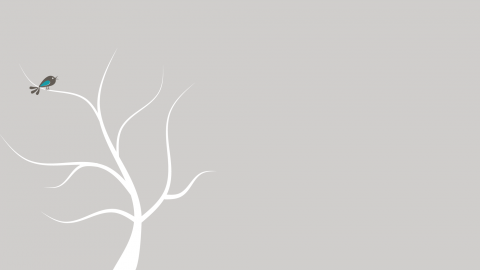http://www.dbsalliance.org
Bipolar disorder (also known as manic depression) is a treatable illness marked by extreme changes in mood, thought, energy and behavior. It is not a character flaw or a sign of personal weakness. Bipolar disorder is also known as manic depression because a person’s mood can alternate between the "poles" of mania (highs) and depression (lows). These changes in mood, or "mood swings," can last for hours, days, weeks or months.
Bipolar disorder affects nearly six million adult Americans. It usually begins in late adolescence (often appearing as depression during teen years), although it can start in early childhood or later in life. An equal number of men and women develop this illness (men tend to begin with a manic episode, women with a depressive episode), and it is found among all ages, races, ethnic groups and social classes. The illness tends to run in families and appears to have a genetic link. Like depression and other serious illnesses, bipolar disorder can also negatively affect spouses and partners, family members, friends and coworkers.
Symptoms
Bipolar disorder differs significantly from clinical depression, although the symptoms for the depressive phase of the illness are similar. Most people who have bipolar disorder talk about experiencing "highs" and "lows" — the highs are periods of mania, the lows periods of depression. These swings can be severe, ranging from extreme energy to deep despair. The severity of the mood swings and the way they disrupt normal life activities distinguish bipolar mood episodes from ordinary mood changes.
The "Highs" of Bipolar Disorder: Symptoms of Mania
- Increased physical and mental activity and energy
- Heightened mood, exaggerated optimism and self-confidence
- Excessive irritability, aggressive behavior
- Decreased need for sleep without experiencing fatigue
- Grandiose thoughts, inflated sense of self-importance
- Racing speech, racing thoughts, flight of ideas
- Impulsiveness, poor judgment, distractibility
- Reckless behavior
- In the most severe cases, delusions and hallucinations
The "Lows" of Bipolar Disorder: Symptoms of Depression
- Prolonged sadness or unexplained crying spells
- Significant changes in appetite and sleep patterns
- Irritability, anger, worry, agitation, anxiety
- Pessimism, indifference
- Loss of energy, persistent lethargy
- Feelings of guilt, worthlessness
- Inability to concentrate, indecisiveness
- Inability to take pleasure in former interests, social withdrawal
- Unexplained aches and pains
- Recurring thoughts of death or suicideA mixed state (also called mixed mania) is a period during which symptoms of a manic and a depressive episode are present at the same time.
.. –>StartFragment –>
There are several kinds of bipolar disorder. Each kind is defined by the length, frequency and pattern of episodes of mania and depression.
Bipolar I Disorder
Bipolar I disorder is characterized by one or more manic episodes or mixed episodes (symptoms of both a mania and a depression occurring nearly every day for at least one week) and one or more major depressive episodes. Bipolar I disorder is the most severe form of the illness marked by extreme manic episodes.
Bipolar II Disorder
While bipolar I disorder is characterized by one or more manic episodes or mixed episodes and one or more major depressive episodes; bipolar II disorder is diagnosed after one or more major depressive episodes and at least one episode of hypomania, with possible periods of level mood between episodes.
The highs in bipolar II, called hypomanias, are not as high as those in bipolar I (manias). Bipolar II disorder is sometimes misdiagnosed as major depression if hypomanic episodes go unrecognized or unreported. If you have recurring depressions that go away periodically and then return, ask yourself if you have also:
- Had periods (lasting four or more days) when your mood was especially or abnormally energetic or irritable?
- Were you:
- Feeling abnormally self-confident or social?
- Needing less sleep or more energetic?
- Unusually talkative or hyper?
- Irritable or quick to anger?
- Thinking faster than usual?
- More easily distracted/having trouble concentrating?
- More goal-directed or productive at work, school or home?
- More involved in pleasurable activities, such as spending or sex?
- Did you feel or did others say that you were doing or saying things that were unusual, abnormal or not like your usual self?
If so, talk to your health care provider about these energetic episodes, and find out if they might be hypomania. Getting a correct diagnosis of bipolar II disorder can help you find treatment that may also help lift your depression.
Not Otherwise Specified (NOS)
Bipolar disorder that does not follow a particular pattern (for example, re-occuring hypomanic episodes without depressive symptoms, or very rapid swings between some symptoms of mania and some symptoms of depression) is called bipolar disorder Not Otherwise Specified (NOS).
Cyclothymia
Cyclothymia is a milder form of bipolar disorder characterized by several hypomanic episodes and less severe episodes of depression that alternate for at least two years. The severity of this illness may change over time.
Rapid Cycling
Bipolar disorder with rapid cycling is diagnosed when a person experiences four or more manic, hypomanic, or depressive episodes in any 12-month period. Rapid cycling can occur with any type of bipolar disorder, and may be a temporary condition for some people.
Diagnosis
DBSA has found that nearly 7 of every 10 people with bipolar disorder are misdiagnosed at least once, and that the average length of time from a person’s first bipolar symptoms to correct diagnosis and treatment is 10 years. One of the reasons for this is that many people don’t report all of their symptoms. It is important for people to share all symptoms, even those not present during a health care appointment, as well as their family history to help health care providers make a correct diagnosis.
Sometimes symptoms of hypomania (a milder form of mania) are mistaken for "a really good day." Many people don’t report symptoms of mania or hypomania because they feel good and it often doesn’t feel like an illness.
What is the difference between bipolar disorder and ordinary mood swings?
The three main things that make bipolar disorder different from ordinary mood swings are:
Intensity: Mood swings that come with bipolar disorder are usually more severe than ordinary mood swings.
Length: A bad mood is usually gone in a few days but mania or depression can last weeks or months. With rapid cycling, moods last a short time but change quickly from one extreme to another. With rapid cycling, "level" (euthymic) moods do not last long.
Interference with life: The extremes in mood that come with bipolar disorder can severely disrupt your life. For example, depression can make a person unable to get out of bed or go to work or mania can cause a person to go for days without sleep.
For more detailed information on the types of bipolar disorder and their symptoms, read the Mood Disorders section of the Diagnostic and Statistical Manual of Mental Disorders (DSM-IV), which may be available at your local library. http://www.dbsalliance.org
http://www.dbsalliance.org


